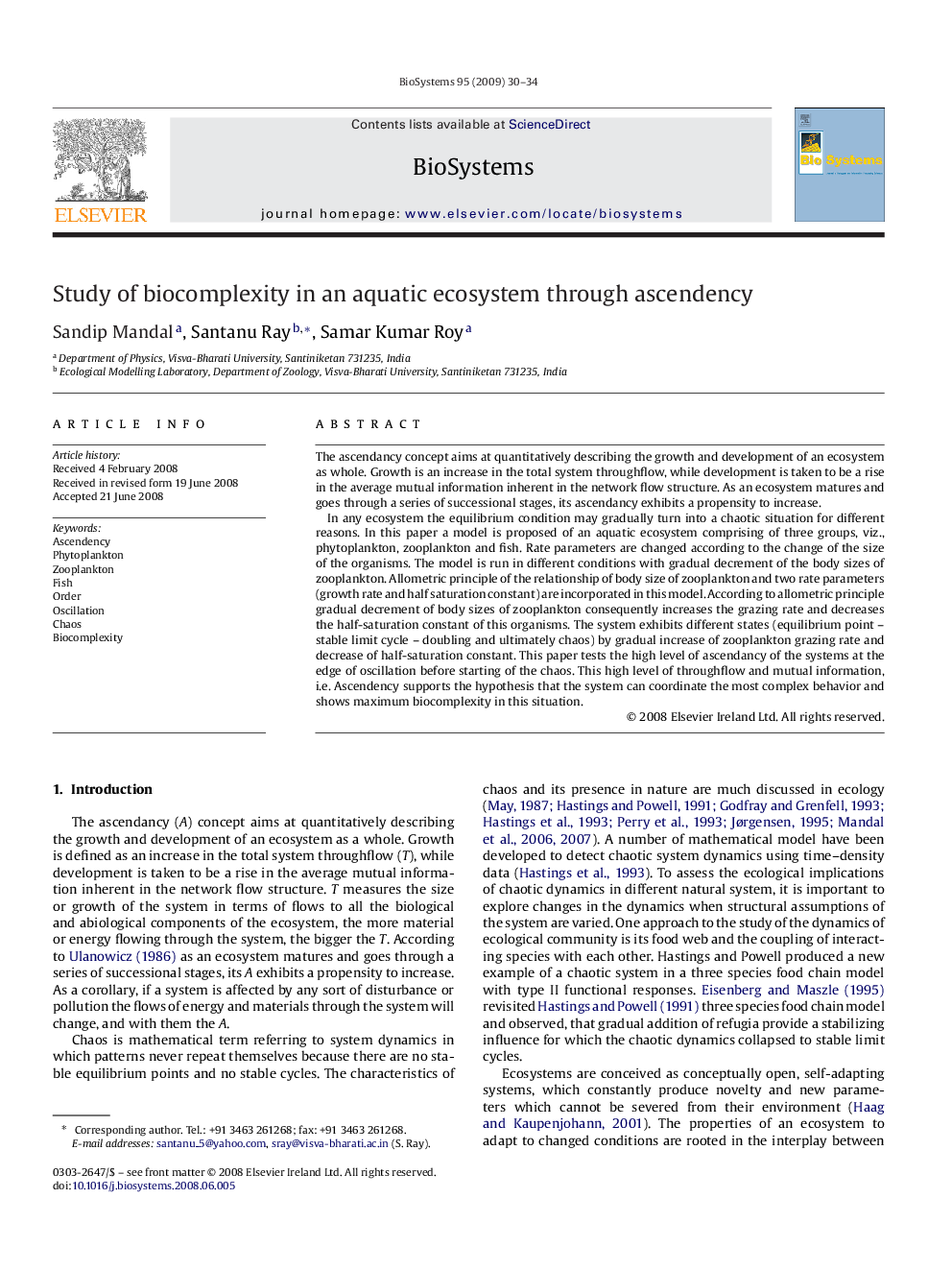| کد مقاله | کد نشریه | سال انتشار | مقاله انگلیسی | نسخه تمام متن |
|---|---|---|---|---|
| 2076622 | 1079456 | 2009 | 5 صفحه PDF | دانلود رایگان |

The ascendancy concept aims at quantitatively describing the growth and development of an ecosystem as whole. Growth is an increase in the total system throughflow, while development is taken to be a rise in the average mutual information inherent in the network flow structure. As an ecosystem matures and goes through a series of successional stages, its ascendancy exhibits a propensity to increase.In any ecosystem the equilibrium condition may gradually turn into a chaotic situation for different reasons. In this paper a model is proposed of an aquatic ecosystem comprising of three groups, viz., phytoplankton, zooplankton and fish. Rate parameters are changed according to the change of the size of the organisms. The model is run in different conditions with gradual decrement of the body sizes of zooplankton. Allometric principle of the relationship of body size of zooplankton and two rate parameters (growth rate and half saturation constant) are incorporated in this model. According to allometric principle gradual decrement of body sizes of zooplankton consequently increases the grazing rate and decreases the half-saturation constant of this organisms. The system exhibits different states (equilibrium point – stable limit cycle – doubling and ultimately chaos) by gradual increase of zooplankton grazing rate and decrease of half-saturation constant. This paper tests the high level of ascendancy of the systems at the edge of oscillation before starting of the chaos. This high level of throughflow and mutual information, i.e. Ascendency supports the hypothesis that the system can coordinate the most complex behavior and shows maximum biocomplexity in this situation.
Journal: Biosystems - Volume 95, Issue 1, January 2009, Pages 30–34